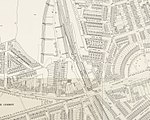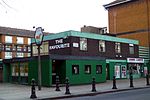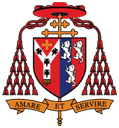Central Gurdwara (Khalsa Jatha) London
20th-century gurdwarasGurdwaras in London

The Khalsa Jatha is a Sikh place of worship in the Notting Hill area of London. The gurdwara was established in 1908, and affiliated to Chief Khalsa Dewan of Amritsar. From 1913 to 1969 congregations were held at 79 Sinclair Road, Shepherd Bush. The present building was established in 1969 onwards at Queensdale Road. The building was later refurbished by Peter Virdi Foundation.
Excerpt from the Wikipedia article Central Gurdwara (Khalsa Jatha) London (License: CC BY-SA 3.0, Authors, Images).Central Gurdwara (Khalsa Jatha) London
Queensdale Road, London Notting Hill (Royal Borough of Kensington and Chelsea)
Geographical coordinates (GPS) Address Nearby Places Show on map
Geographical coordinates (GPS)
| Latitude | Longitude |
|---|---|
| N 51.5066 ° | E -0.2158 ° |
Address
Central Gurdwara (Khalsa Jatha)
Queensdale Road 62
W11 4SD London, Notting Hill (Royal Borough of Kensington and Chelsea)
England, United Kingdom
Open on Google Maps










